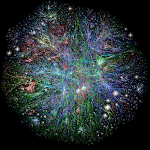WOW! is a new short story created for Spanish science-fiction magazine Exégesis, this time in collaboration with Spanish artist Moisés Bello. I'm leaving links to both the English and Spanish versions. Enjoy it!
- Click here to read the English version online .
- Click here to read the Spanish version online (you can also download it as a PDF).
- Click here to dowload the comic as CBR or PDF, in English or in Spanish.
- You can download the comics viewer CDisplay to read the CBR files (click here)

















.gif)













